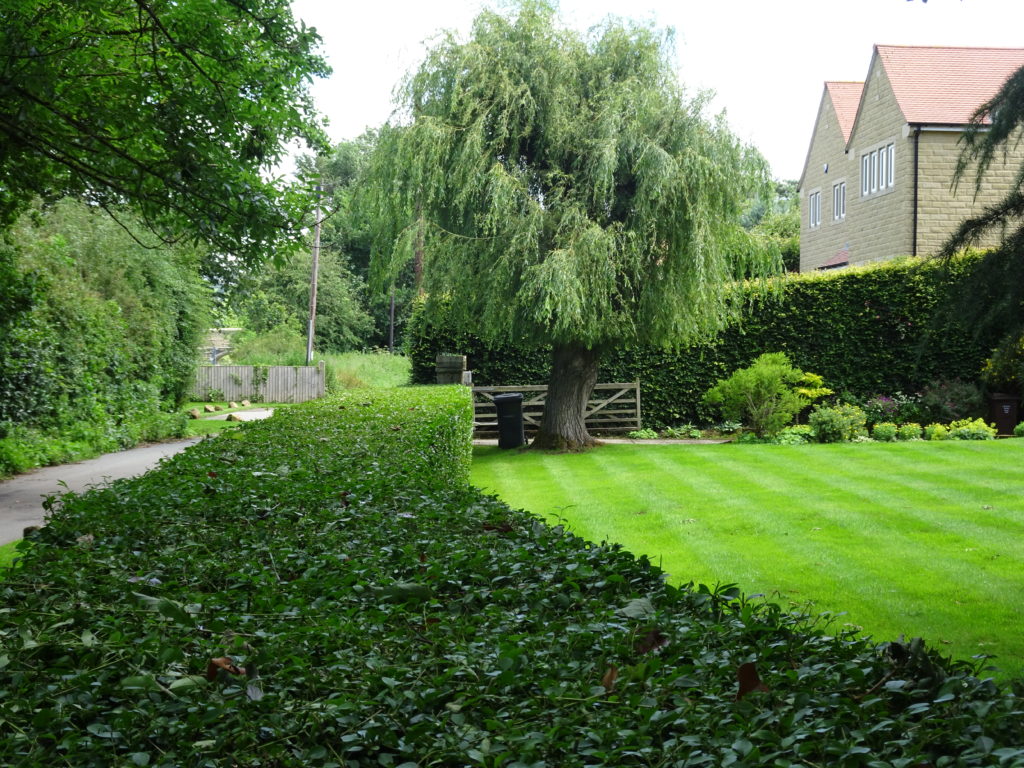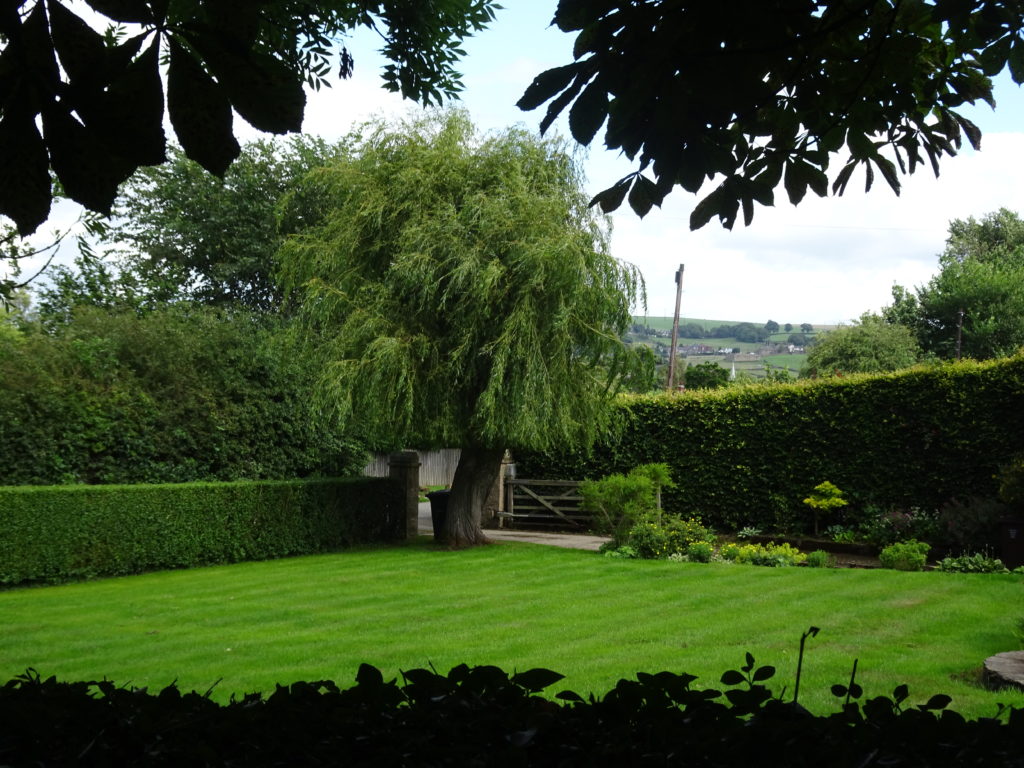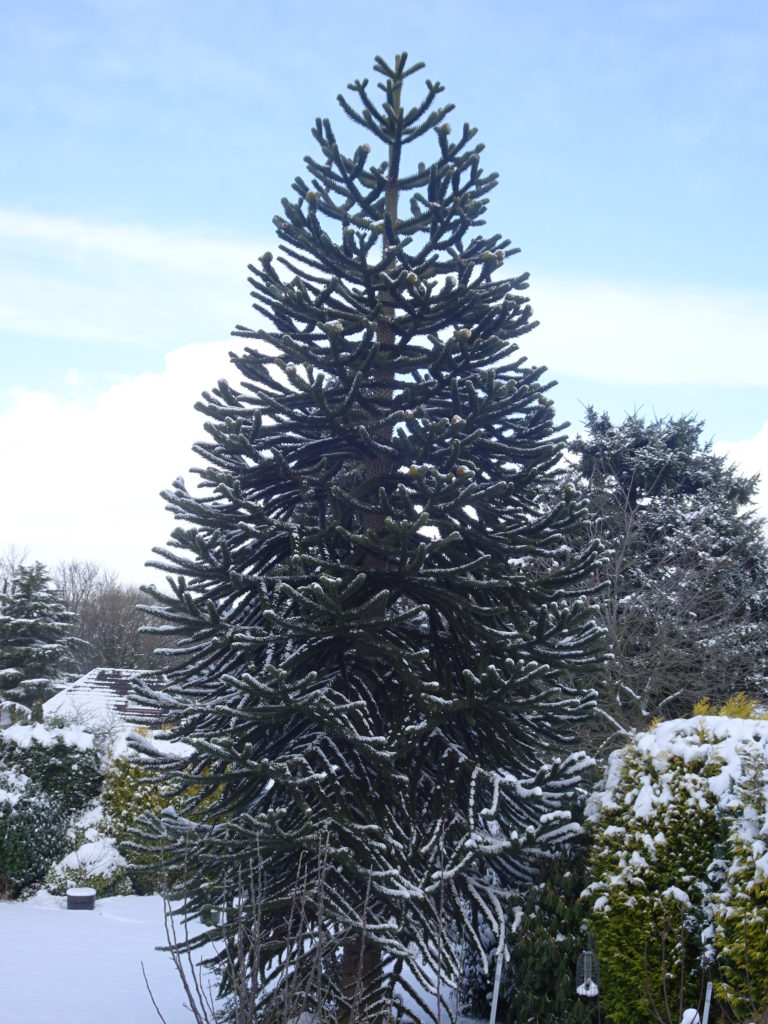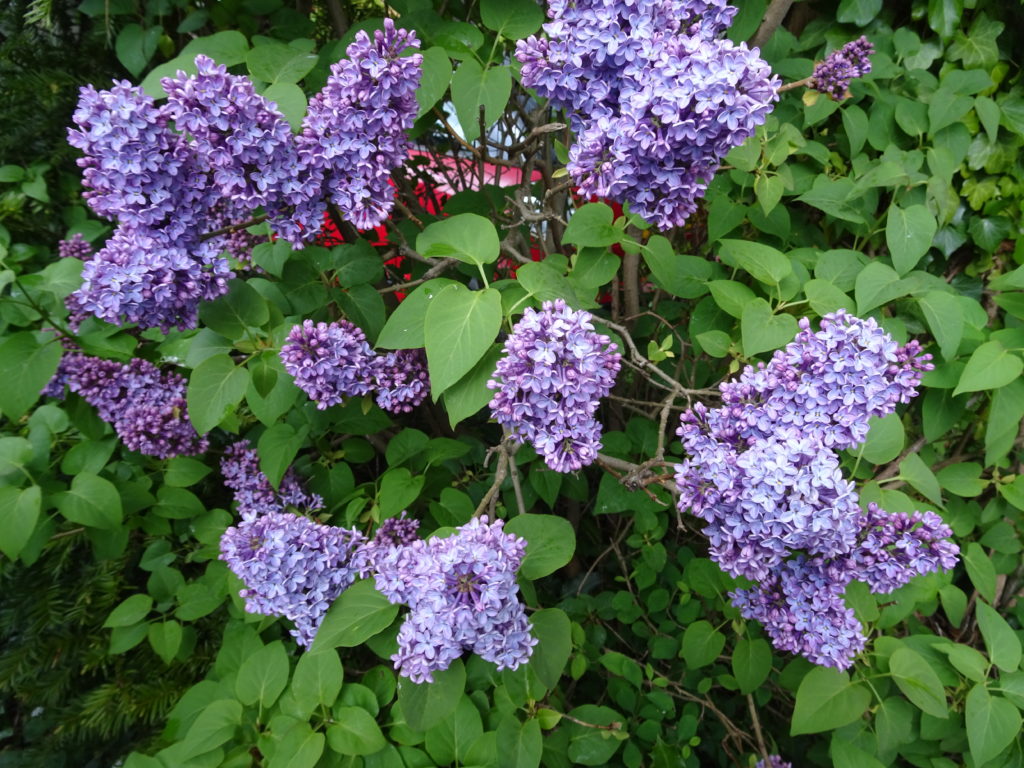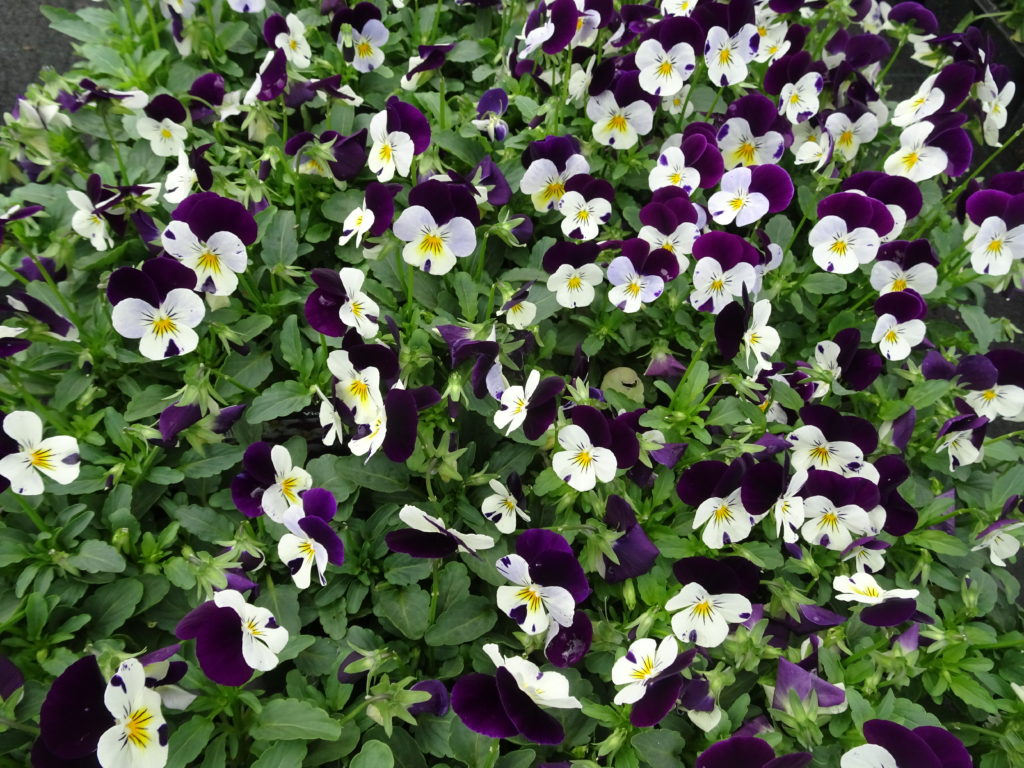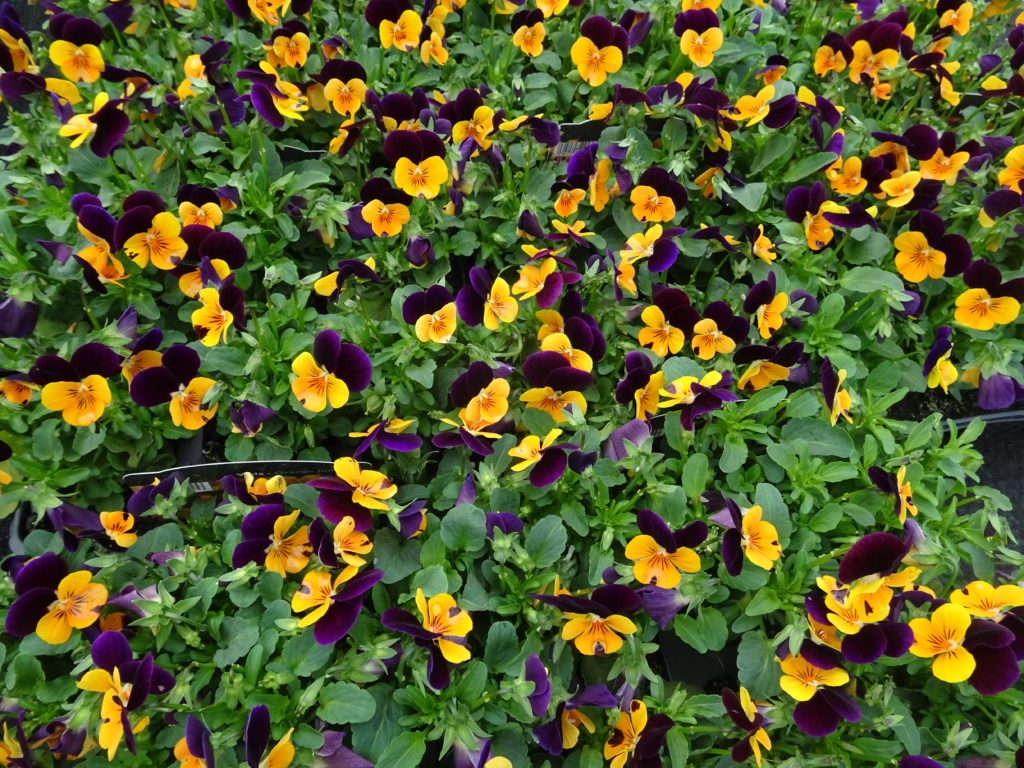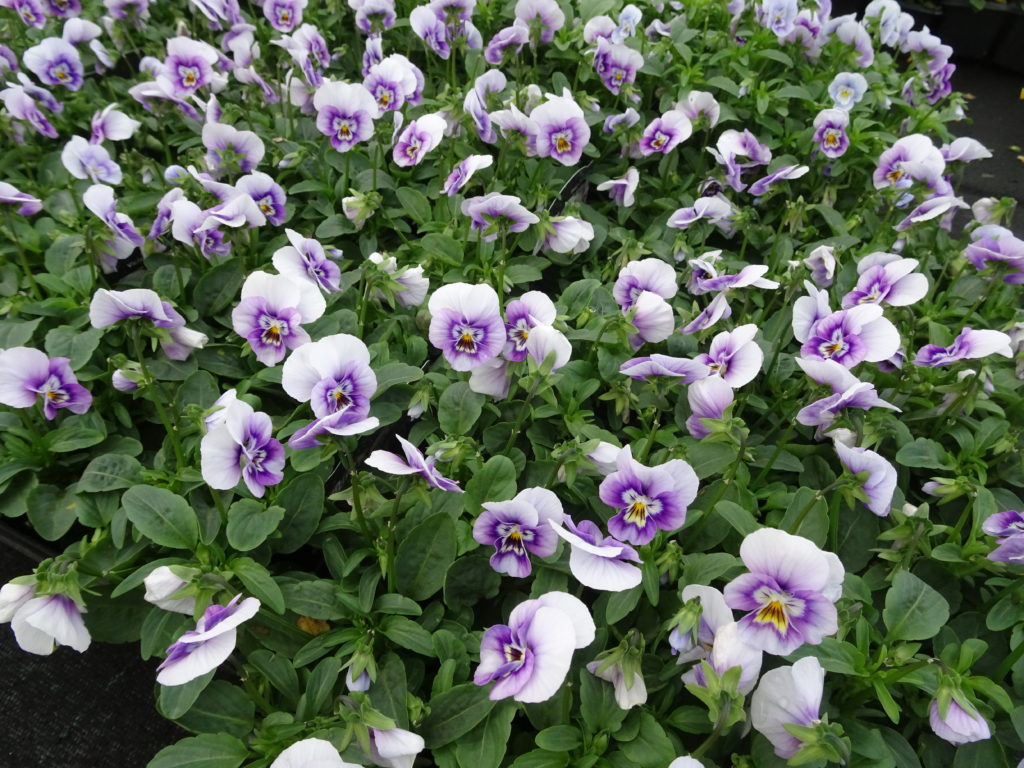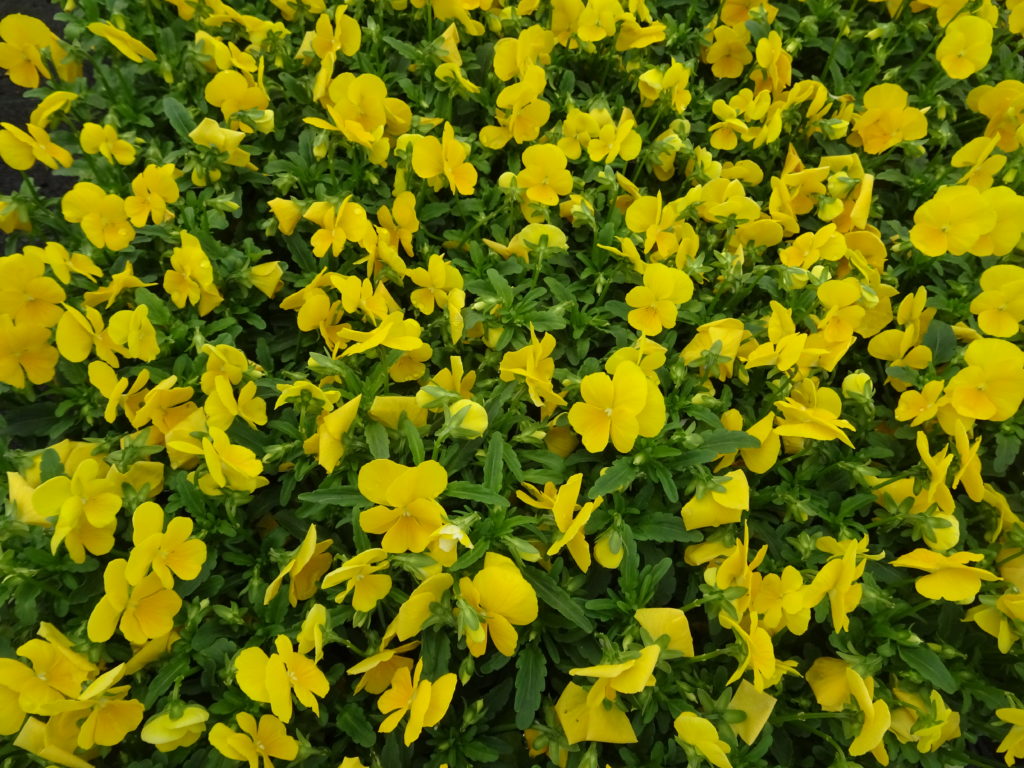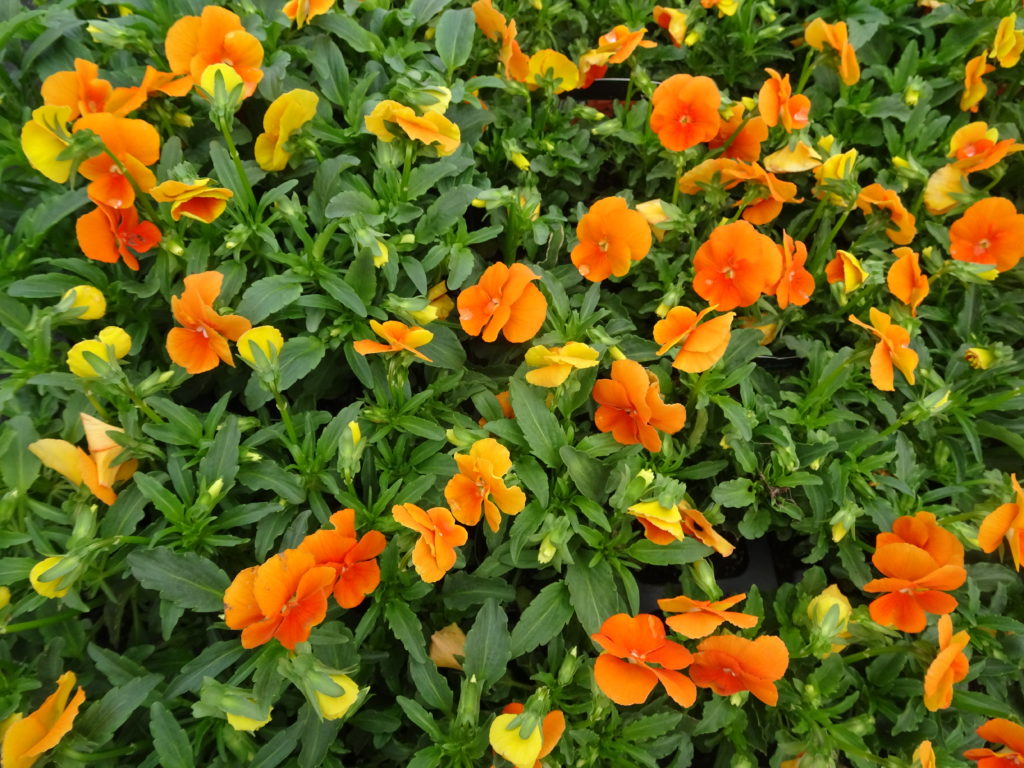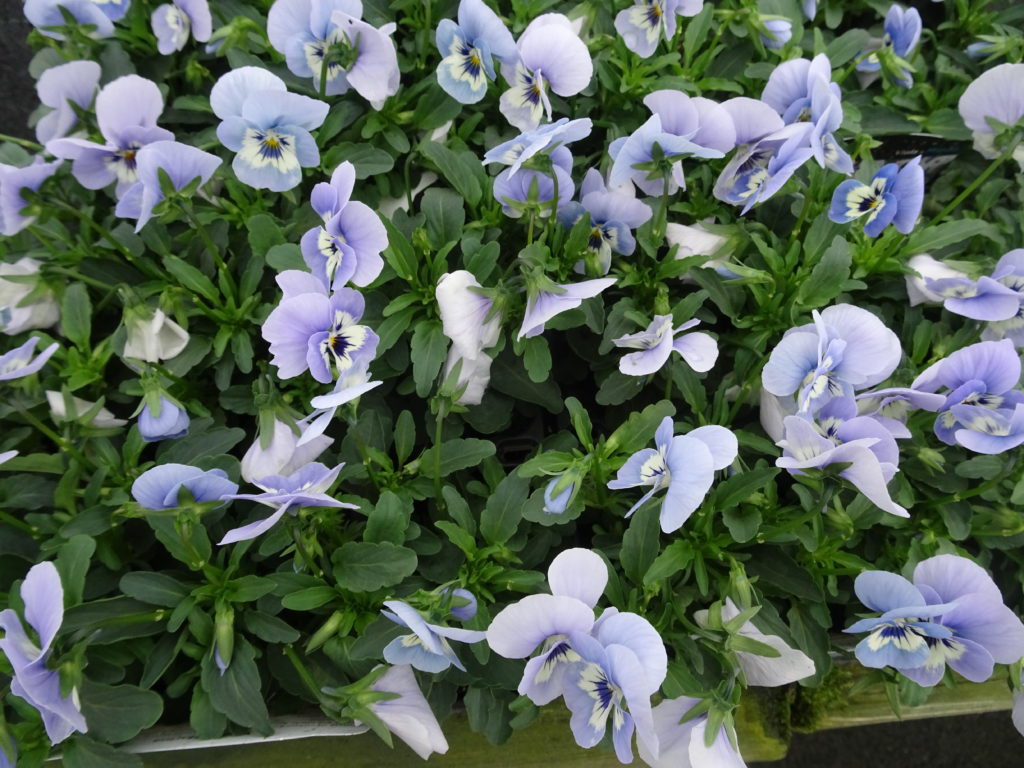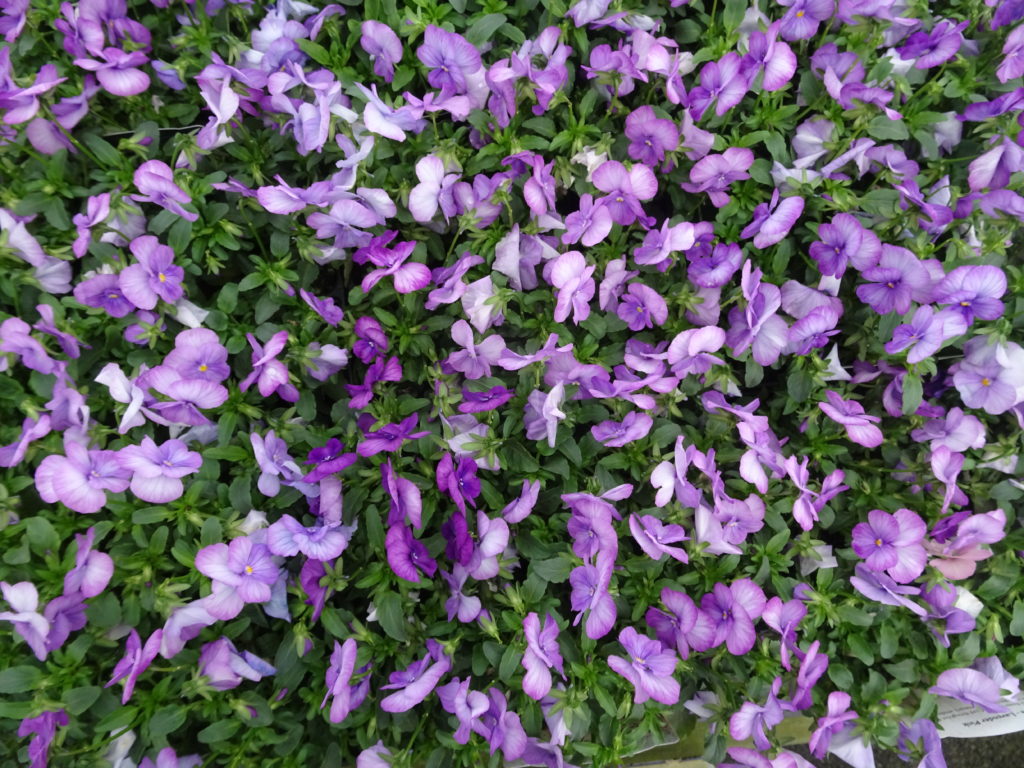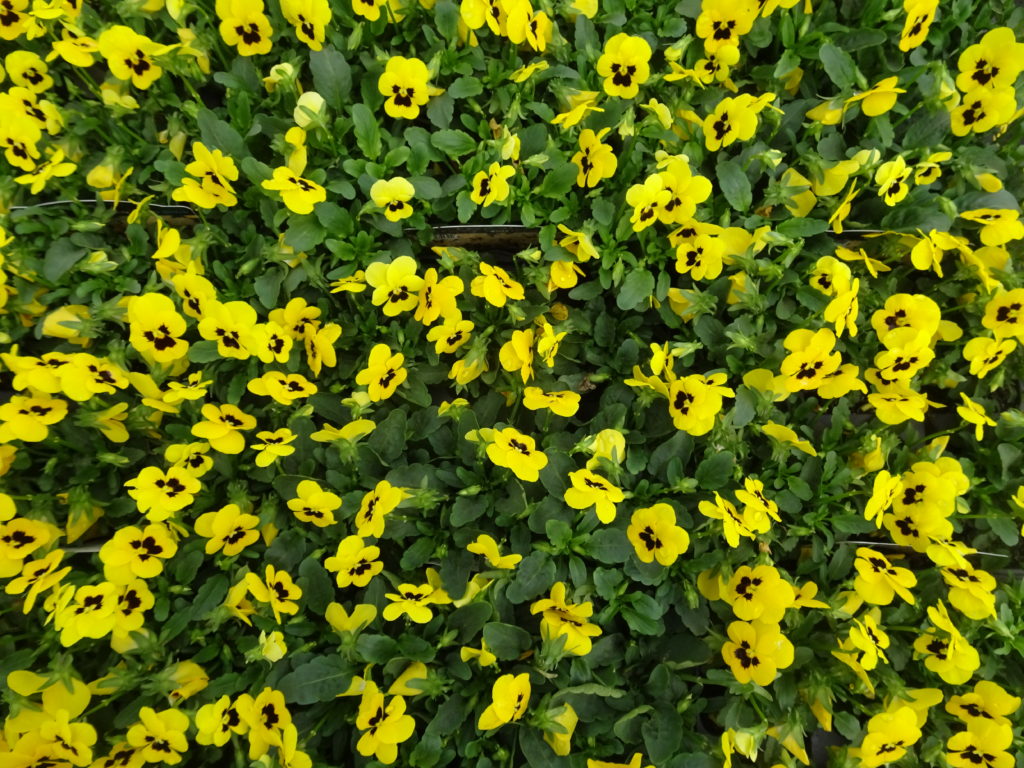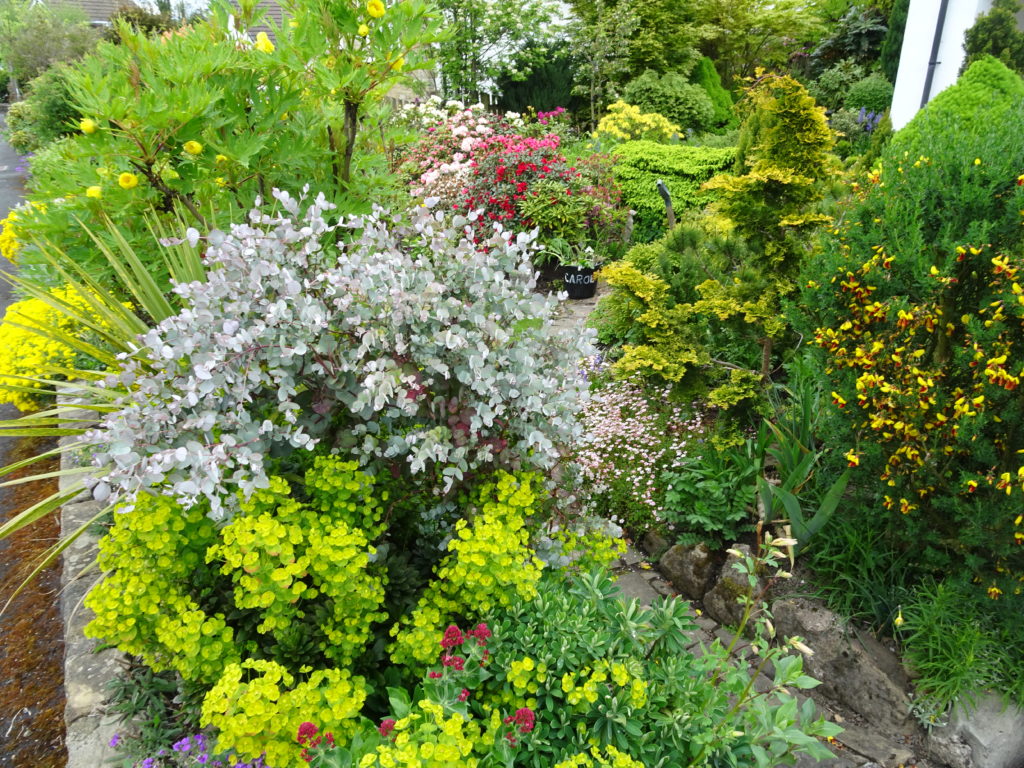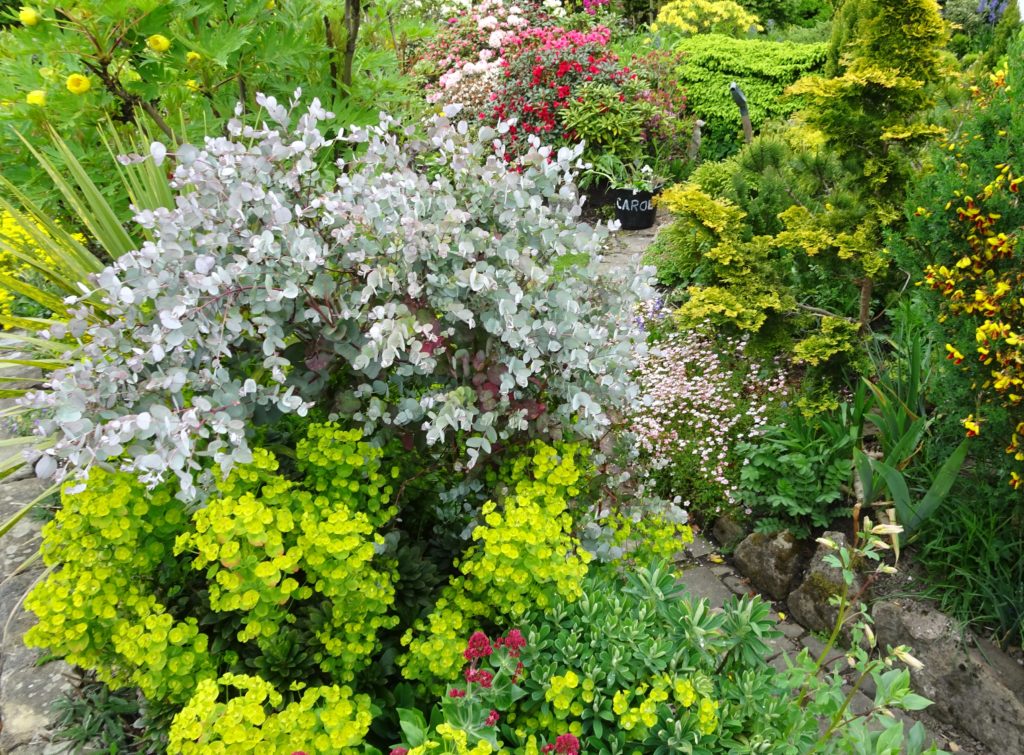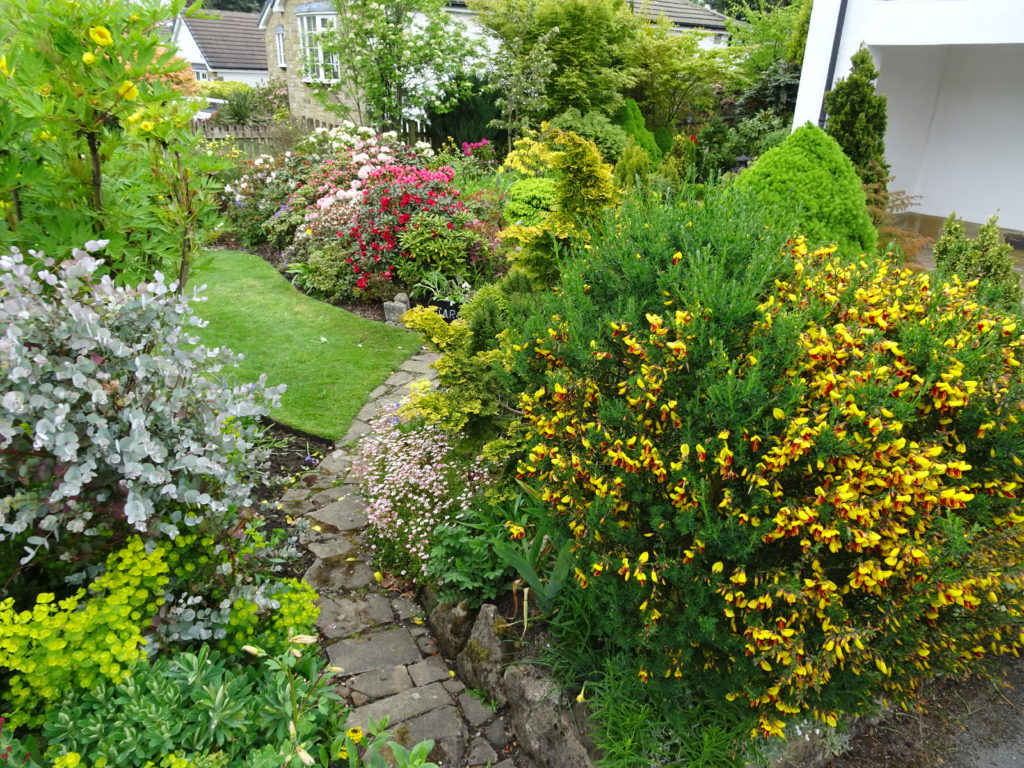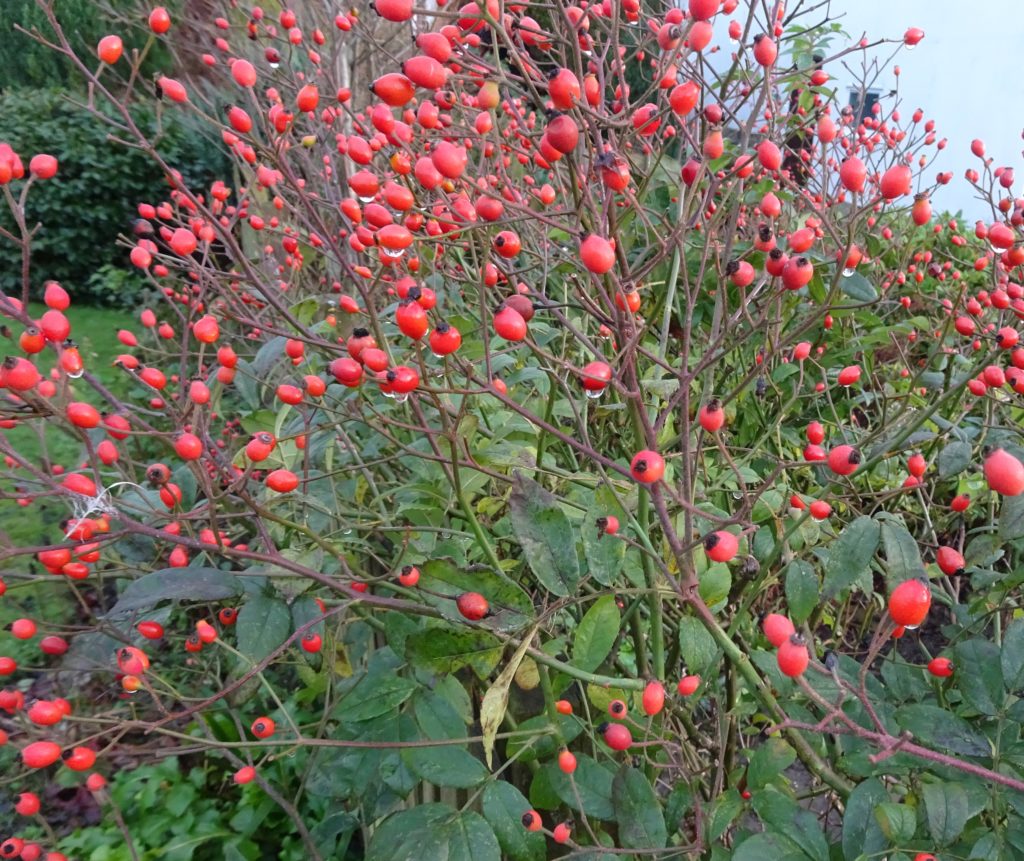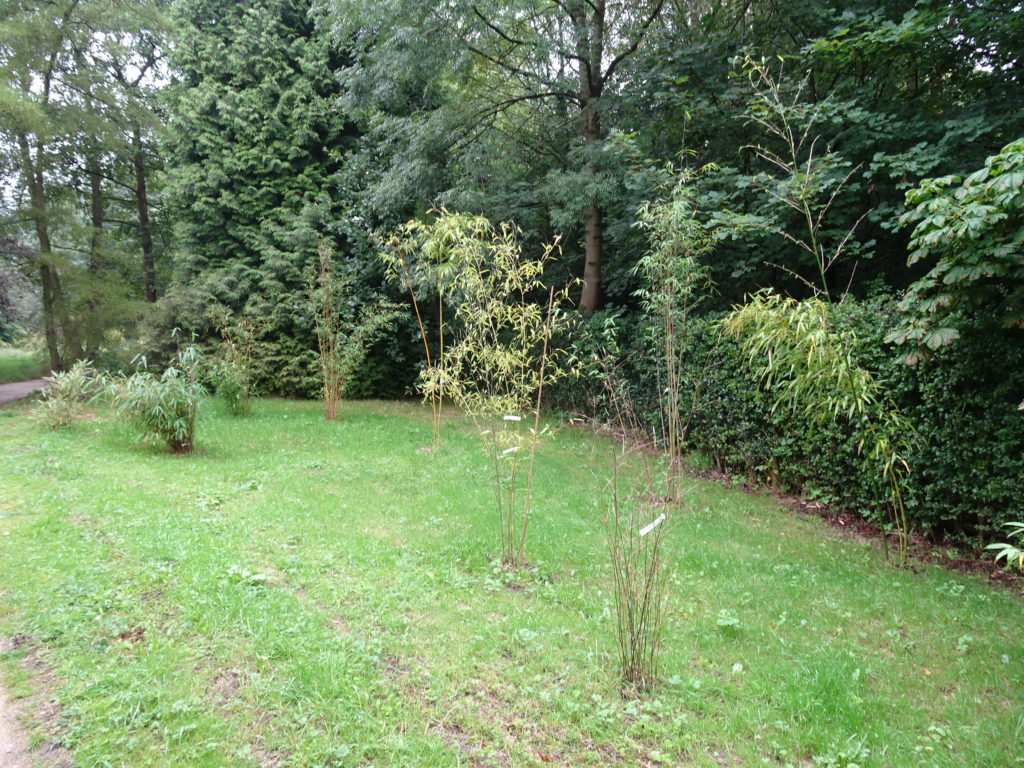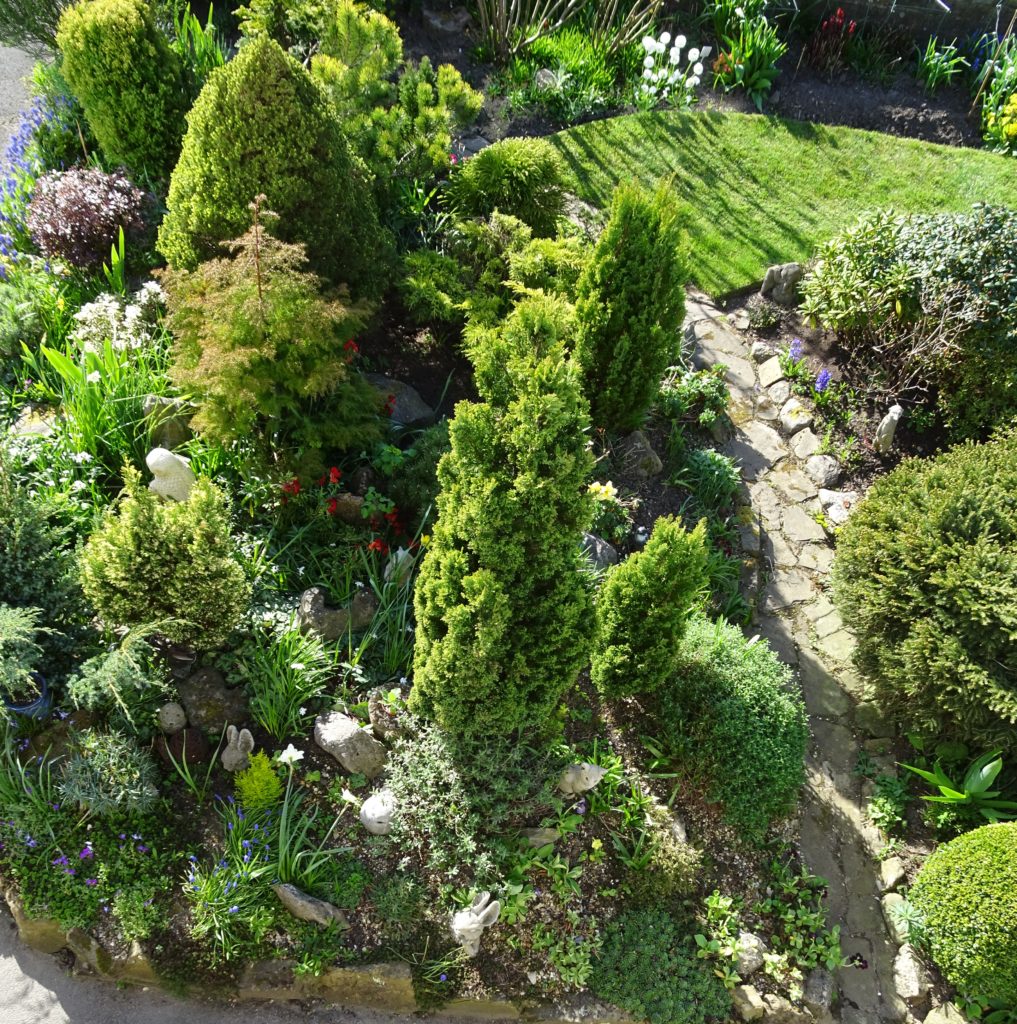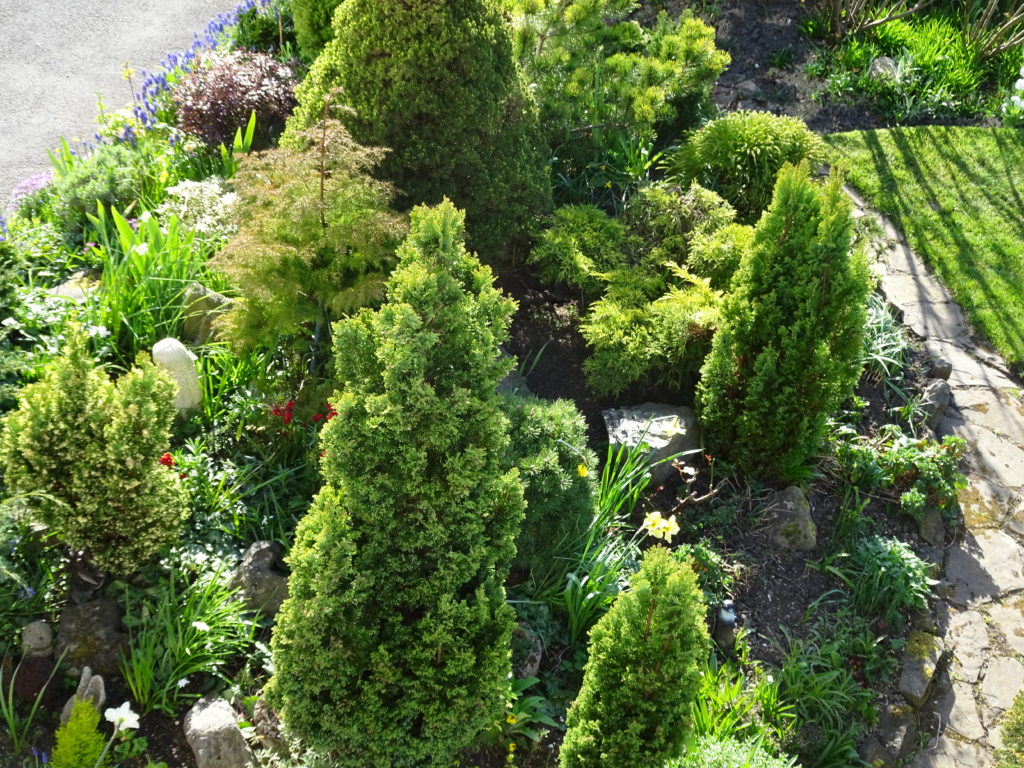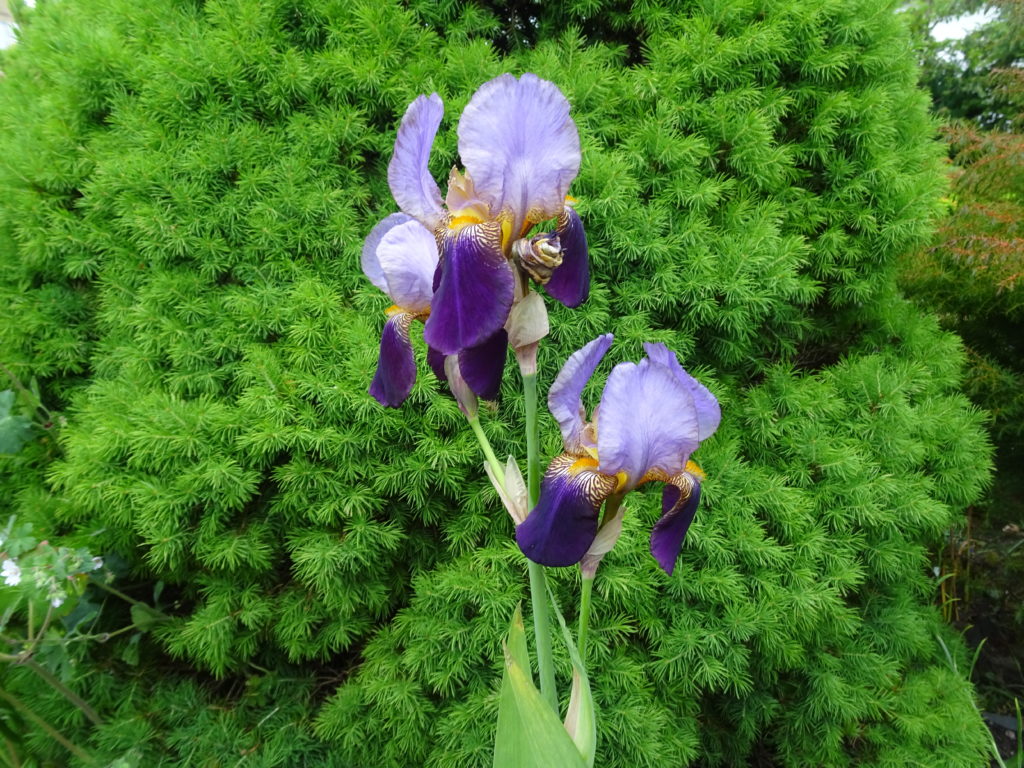
I love Iris as much as Iris love sunshine so we are both happy with this May’s weather. The Thuja occidentalis conifer offers a cool photographic backdrop after coming through a frosty patch of weather in early spring

Lupins are not just for Christmas in fact they are not even for Christmas. They are definitely one of our families favorite hardy perennials for use in a mixed border.
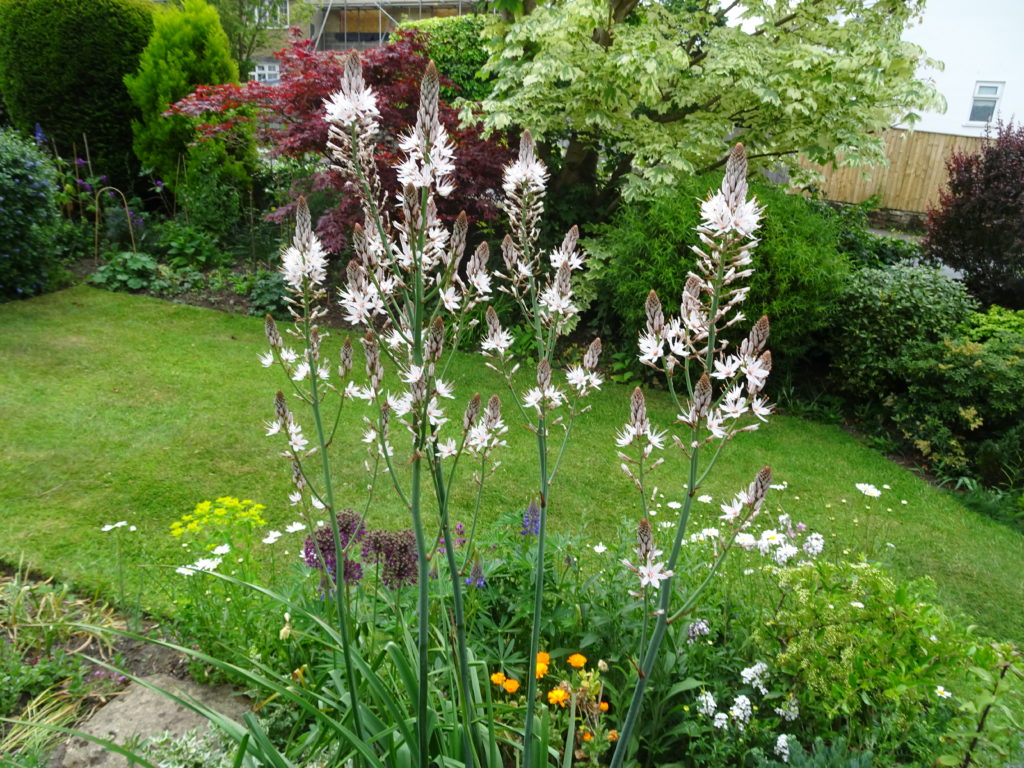
How I regret not remembering the name of this bulb that I planted several years ago. Now it is maturing nicely with many flowering stems and is becoming a distinctive feature plant.
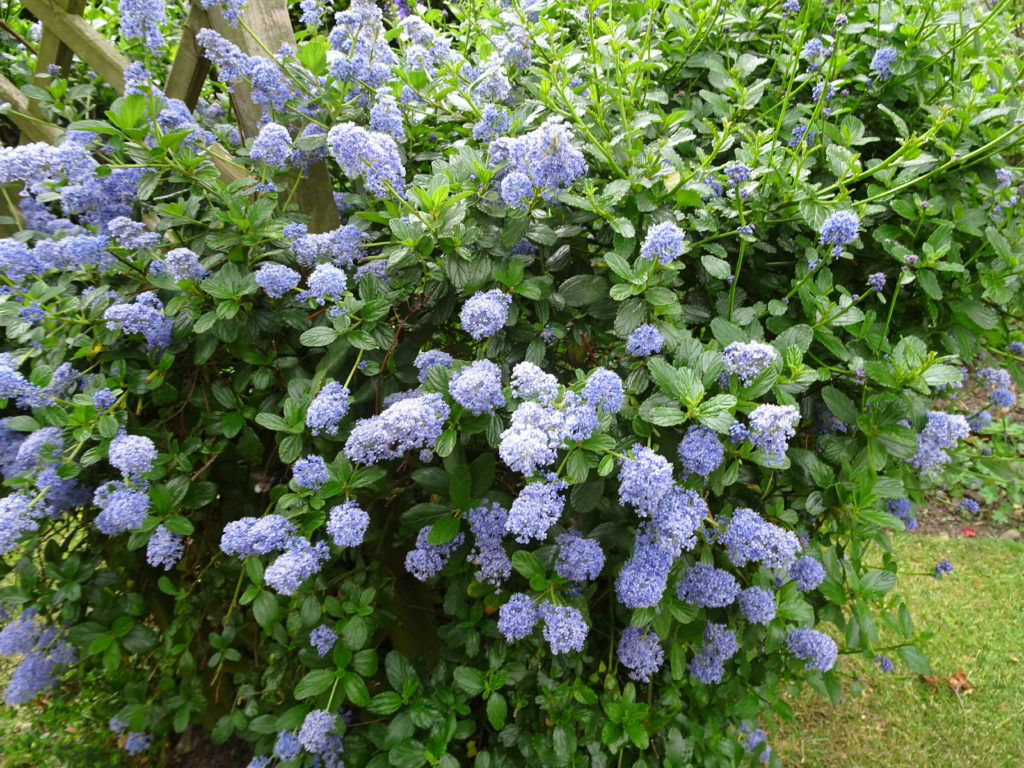
A hardy stand by Ceanothus that I propagate from cuttings. The only draw back for me is that other growth habits, including prostrate and tree forms cannot be propagated from this one plant. (Clone is as colnes does). Ceanothus is also called or known asbuckbrush, California lilac or soap bush,
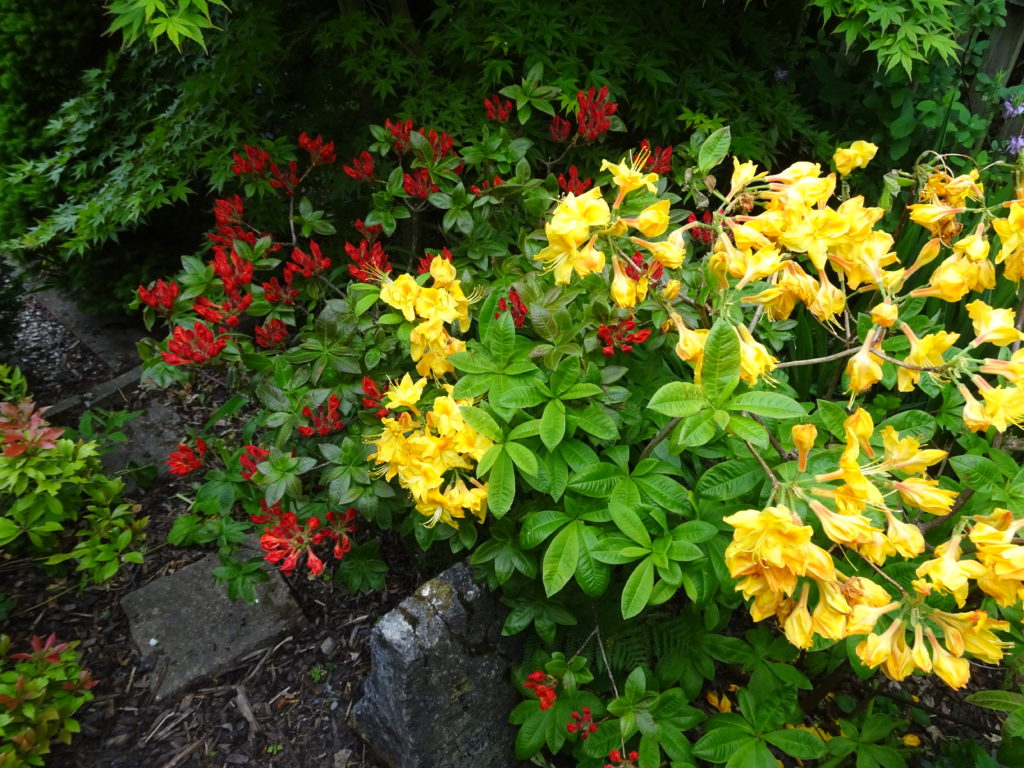
Azaleas in this gloomy corner have survived for several years and I keep promising myself that I will add some other varieties when can I find a place to plant them.
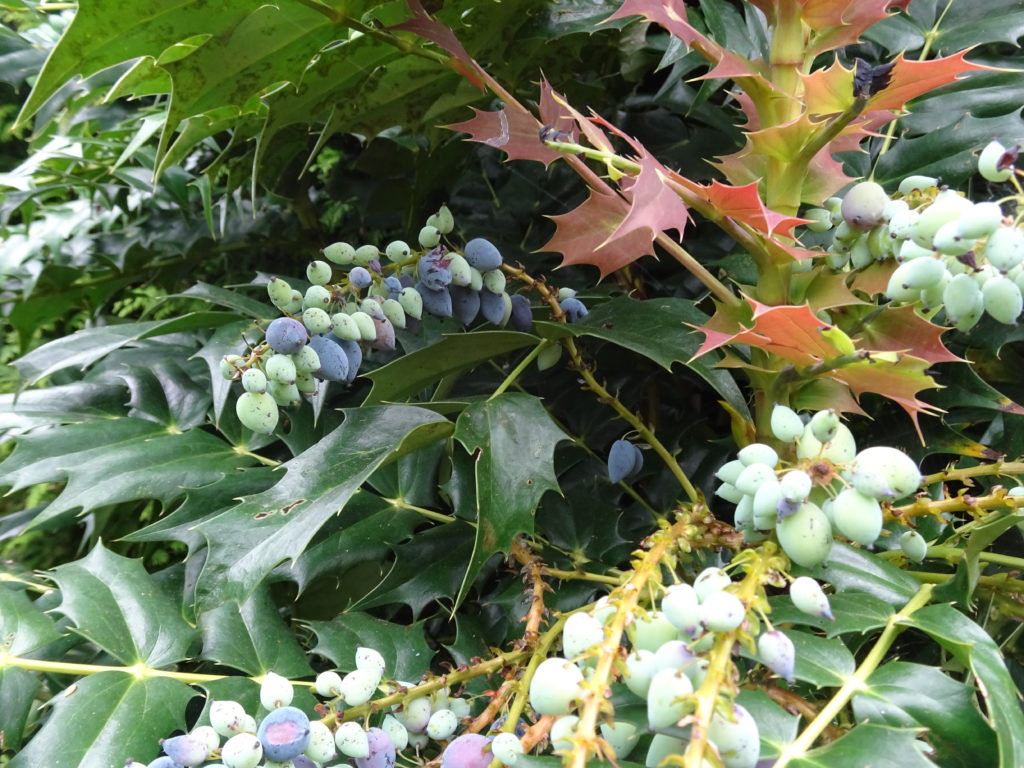
My wife would see the back of this Mahonia to make the space I crave for Azaleas (they both like slightly acidic soil). The sharp leaves ‘needle’ her but I like the all year round interest the plant provides.
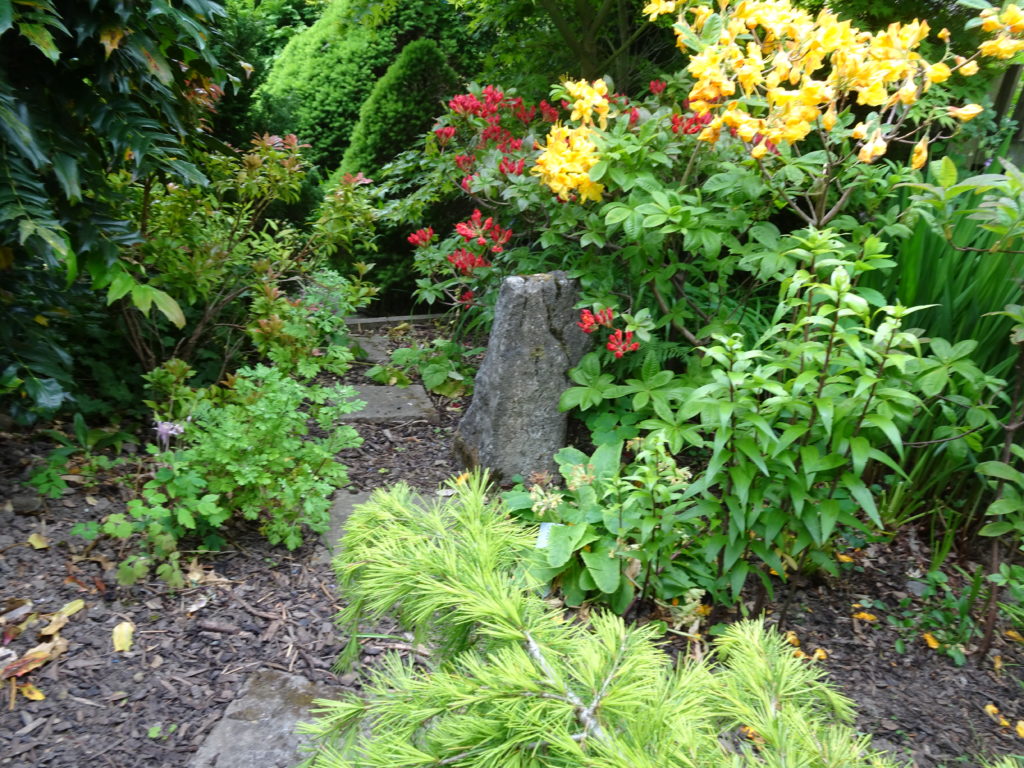
The slabs of paving provide a path through a short Japanese section of the garden which utilises bark chippings rather than a gravel mulch.
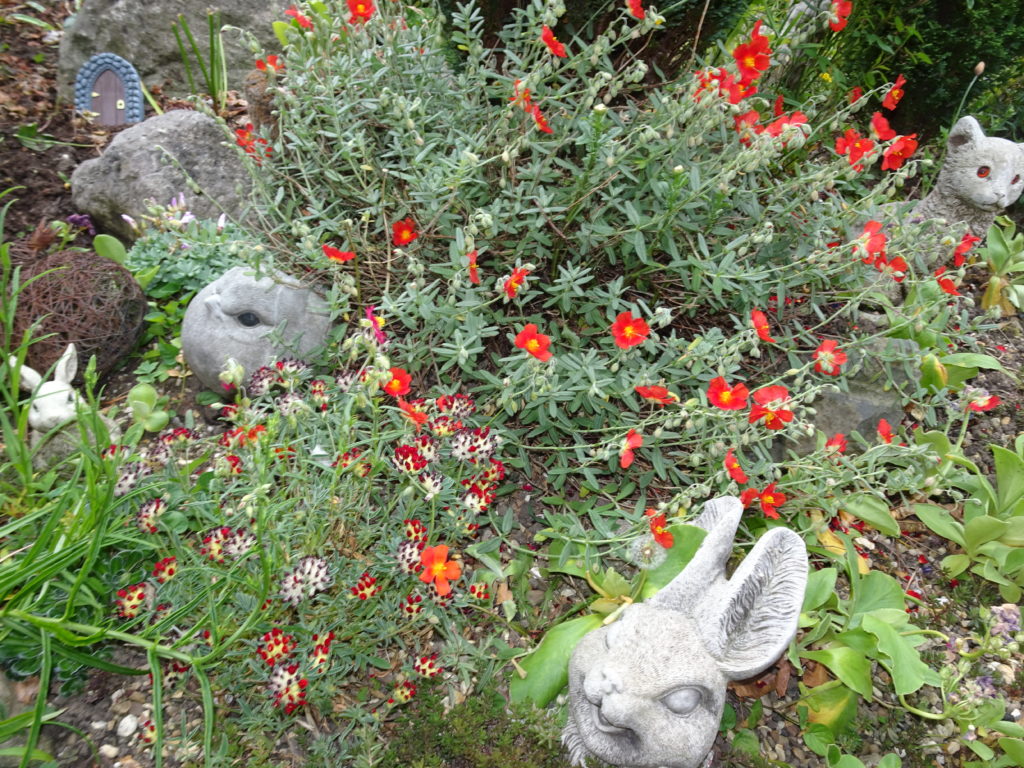
Rabbits breed harmlessly in this part of the ornamental garden. A new acquisition last Christmas was the door as an entrance to the gnomes homes (221b Baker Street elementary my dear watsonnia – is that freudian or the name of my bulb in the third photo)

